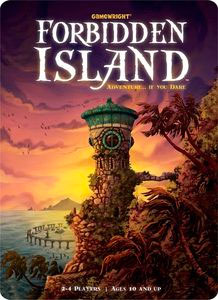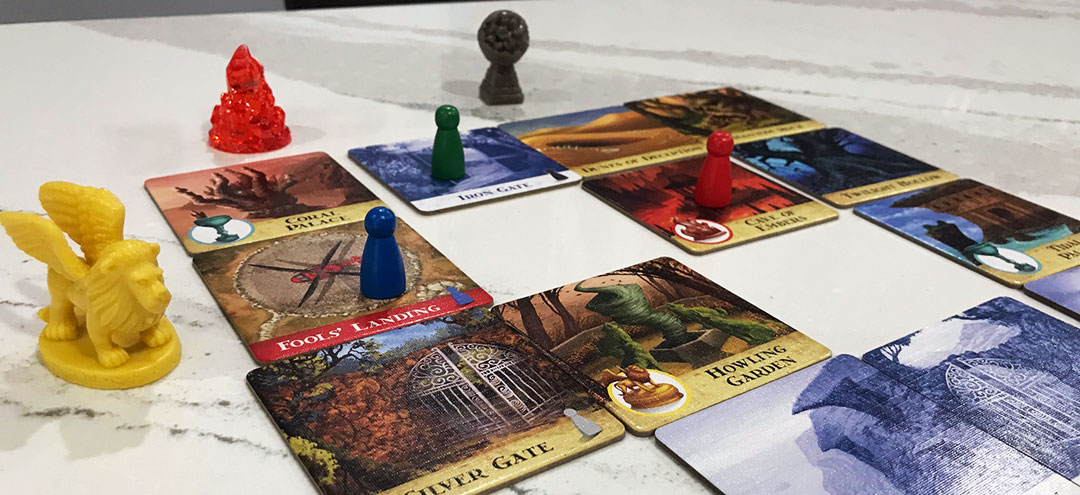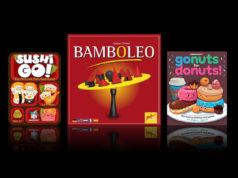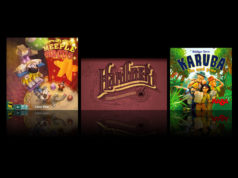COVID-19 has forced a lot of “quality” time with the family. Board games have been needed to fill the hours between teaching your kids math and geography (after you Google the answers). While The Game of Life teaches your children that families come in many varieties (my son always asks if you want to marry a boy or a girl) and Monopoly teaches your children that unregulated capitalism is a horrible way to live and an even worse board game to play, they are not the way I want to spend my 8 weeks of hel—er quarantined quality time with my family. Luckily, I raised a gamer so my time will be spent playing games like Marvel Champions, Pandemic Legacy, Dominion, Stuffed Fables, Aeon’s End, and Legacy: Gears of Time.
During this and hopefully subsequent articles, my 9 year son Damian and I will tell you how we moved from Pop the Pig to Bärenpark. We will have father/son reviews of each game that we played on this journey.
The only place to start is at the beginning:
The first game that I bought (at GenCon) for Damian was:
Slide Blast
Why this game was chosen:
We go to waterparks often, which I thought would improve interest in the game and I wanted to introduce tile-laying games for a foundation for future games
 Quick Summary:
Quick Summary:
Slide Blast is a tile placement game in which players try to build the longest water slide. Players take turns drawing an additional tile and then laying an extension of their slide. Standard slide tiles extend your slide one space while High-speed tiles allow you to place a second tile. There are three oversized Attraction tiles that allow you to affect slides on two additional spaces and the Tunnel tiles allow you to teleport to an unoccupied slide. Extending another players’ slide gives you bonus points that increase in value each time you move an opponent. The game ends when there are no more tiles to draw and the winner is the player with the most points (one point for each tile your slide touches plus any bonus points for extending other players slides).
My Take:
This is a quick and fun game to play with small children or beginning gamers. The stated Age is 7+, but I played it with my younger son when he was 4 without difficulty. I like that it introduces the mildest “take that” because when you extend another player’s slide you get bonus points, but they also get one point. You will see in later articles, I am not a fan of full-on “take that” in games with your own children, as it causes too many tears or guilt-driven throttling back of your own gameplay, at least for me.
Damian’s take:
(Father’s note. While I have edited Damian’s entries, I have tried to leave them in the 9 year old voice, so there may be grammar errors. Blame the editor for any grammar errors in the rest of my article.)
I love water parks! In fact, I’ve gone to 13 different ones, so a water park game is right up my alley. Slide Blast is lots of fun because you can take over other people’s slides and get points for that. Another aspect of the game I like is the tunnel tile, which allows you to transfer from one place to another making it a lot easier to get points. I also enjoy the attraction tiles, these oversized tiles are three tiles in one, making getting points really easy.
Overall, I think the game is great because you get to build your own water slide and it is easy to score points.
2-6 Players • Ages 7+ • 20 minutes • $25
Survive: Escape from Atlantis
Why this game was chosen:
I used to play the original 1982 version of Survive with my much older, less handsome, and less funny brother Brian (who also writes articles for BGQ). We loved it as kids and I wanted to share that same love with my son. Also, it added more strategy into tile selection than Slide Blast and upped the “take that” a bit.
 Quick Summary:
Quick Summary:
We played the Stronghold games Survive: Escape from Atlantis, not the 30th anniversary edition, so I do not know if there are changes between the two.
In Survive, An underwater volcano has erupted and the island of Atlantis is sinking into the sea. You try to lead all ten of your people—each worth a hidden number of points— from the sinking central island of Atlantis to the safety of one of four islands nearby. Your people can get there together by boat or individually by swimming, which I do not recommend. But the island is sinking one tile at a time and the journey is made more perilous as the people must avoid sea serpents, whales, and sharks. When the volcano on Atlantis explodes, the game is over. Gameplay is simple, each turn you may play a land tile from your hand, move any combination of people and boats, then remove a land tile located next to a sea space. Finally, a die is rolled and monsters might be moved. Whoever rescues the people worth the most points wins.
My Take:
I loved this game as a kid and still enjoy it as an adult. The theme is fun, the mechanics of how and why the tiles sink allows some strategy and some randomness, plus who doesn’t enjoy making Sea Serpents and sharks eat people. This game introduces some “take that” but in a theme that you can use to make it fun for the kids, which doesn’t typically lead to crying. It does lead to a lot of begging to kill their sibling’s or mom’s people instead of their own. The stated age says 10+, but again starting at 4 my younger son was able to play the game.
Damian’s take:
Survive is very different than any game I have ever played because in most other games you’re trying to take care of your civilization. In this game, you’re running away from your civilization.
Survive is lots of fun to play and doesn’t take long. My favorite aspect of the game is that you’re trying to escape an island that’s sinking. There are whales trying to tip your boat over and sharks trying to kill your people and sea serpents that can do both. Another really great thing about the game is that you get to pick where the land sinks. Each tile is different in a good or bad way, for example, a shark is put at this location, or +three spaces while driving a boat that turns. Overall, the game is very exciting and I like the hidden scoring they use to see who wins.
2-4 Players • Ages 8+ • 20 minutes • $25
Forbidden Island
Why this game was chosen:
This is another game where tiles, or in this case cards, are removed from the game. I chose this game because it introduces the concept of randomness to Damian, as cards choose which tiles disappear instead of players. It also introduced Damian to co-operative games, which I prefer with children, as there is less crying.
 Quick Summary:
Quick Summary:
In Forbidden Island, you are a team of adventurers working together to keep Forbidden Island from sinking, but just long enough for you to steal the 4 treasures on the island and then escape via helicopter. Then you leave the now worthless island to sink. You accomplish this by collecting sets of cards to capture the treasures on their designated tiles. Two cards are dealt at the start of the game to each player and they are kept face up. On each player’s turn they take three actions (Move, Shore up, Give a treasure card, and/or Capture a Treasure), then draw two cards, and reveal flood cards. You may also play special action cards without spending an action. With a hand limit of five cards and the need to collect four cards of each treasure, there is a lot of giving treasure cards to teammates. The entire time you are trying to collect treasure cards the island is flooding and tiles that your adventurers walk on are sinking.
My Take:
Forbidden Island is just okay, I am clearly in the minority in this opinion as there are at least two sequels that I know of, Forbidden Desert and Forbidden Sky, both add building aspects not present in this game. That being said, Forbidden Island works as an introduction to a lot of different aspects of games I actually like in a simple format. It introduced Damian to:
- Job Selection – There are six different adventurers each with their own unique ability. The game says to deal them at random, but I prefer to have Damian improve his strategic mind by considering each ability and selecting the one he thinks will be most helpful to win the game.
- Cooperative play – Warning, it is very easy to “quarterback” this game and tell your teammate what to do. Avoid doing that so your child learns to think about the goals of the team and not just what is best for their adventurer.
- Randomness – The tiles that flood are chosen by the flood cards, which for the first round leaves everything to chance. However, once you reveal the Waters Rise card you shuffle the previous flood cards and put them back on top of the deck to re-sink tiles that you shored up or remove tiles from the game. This does allow some strategic planning and is my favorite aspect of this game.
- Set collection – An important concept for young gamers to understand.
Overall, Forbidden Island is a fast paced co-op game that introduced Damian to a lot of important gaming concepts but would rarely be a game I reach to play with adults.
Damian’s take:
For me, Forbidden Island was very different because you’re trying to find four treasures on a flooding island instead of running away (Survive). This was by far the shortest game I’ve ever played because you need to only get four of the same card and discard them on the matching tile on the board 4 times to win. During the game you definitely do not believe you are going to win because the sea level keeps rising. This game is one of my favorites because we are working as a team instead of working by ourselves. Overall, the game is very stressful but lots and lots of fun.
2-4 Players • Ages 10+ • 30 minutes • $30
Azul
Why this game was chosen:
This was the goal of playing the games above. I now get to play Azul, a game I love, as you will see below, while you may be stuck playing Chutes and Ladders. This game requires an understanding of strategy for tile placement, some “take that” through hate drafting, and randomness that affects your gameplay.
 Quick Summary:
Quick Summary:
In Azul, players are ceramic tile artists competing for the honor of creating a ceramic tile wall in the Royal Palace of Evora in Portugal for King Manuel I. The best part is you don’t have to be artistic! Players take turns drafting colored tiles until all tiles are chosen. Players either draft all of the tiles of the same color from one “factory display” while placing the remaining tiles from the display in the center of the table, or they draft all of the tiles of one color from the center of the table.
Then players place the tiles on their board in one of the five pattern lines, each line takes as many tiles as its line number to complete (Line 1 requires 1 tile, Line 5 requires 5). Once a line is filled, additional tiles drafted that turn “fall to the floor” and give you negative points. Once all tiles are selected, players score points based on how their completed pattern lines decorate the palace wall. Bonus points are awarded at the end of the game in a few categories as well. The game ends when the first player completes a row (5 rounds is the minimum to complete a row) The player with the most points at the end of the game wins.
My Take:
I love multiplayer solitaire games. While you can hate draft, that is mostly only a sound strategy near the end of the game. I have played Azul many times and I recommend you plan on playing two games the first time, as about halfway through the first game is when you really begin to understand the game and strategies. Damian beat me on our second try, I love this game for that. It is a game that I can play all out and still lose to a 9-year old.
Damian’s take:
Azul is the best tile game I have ever played because you’re trying to make a tiled wall one piece at a time. The game is lots of fun because you can have multiple strategies. You could just go for one type of a tile, you could try and complete columns, or try and end the game quickly by making a row. This game is lots of fun for me because you’re making a colorful wall. Azul ends after the first person makes a row, which I think is very smart because that prevents the game from taking a long time. Another thing I love about the game is how you score after every round, and I love how you do it at the end of the game too. Overall, this is one of the best games I have ever played because of the scoring and how you play the game.
2-4 Players • Ages 8+ • 30-45 minutes • $45
Thank you for joining us in the first edition of How to Raise a Gamer. In each article, we will attempt to show a progression that helps parents and kids navigate their way to more complex games. But that does not mean the preceding games are of no value on their own, as I just snapped into my Speedo and am heading back to play Slide Blast. Please let this quarantine end soon, I think I am losing my mind.
About the Authors
 Christopher Biewer
Christopher Biewer
At four years old, Christopher’s older brother and fellow BGQ contributor, Brian, forced him to start playing board games that were way too complex for him. The sight of Fortress America still makes him nauseous, but he loves most games now, with Legacy: Gears of Time being an all-time favorite.
Damian Biewer
Damian was bit by the love of board games and joined the “Cult of the New” when his Uncle Brian started bringing over new board games at least once a month. His current favorites include deck building and cooperative games.
























